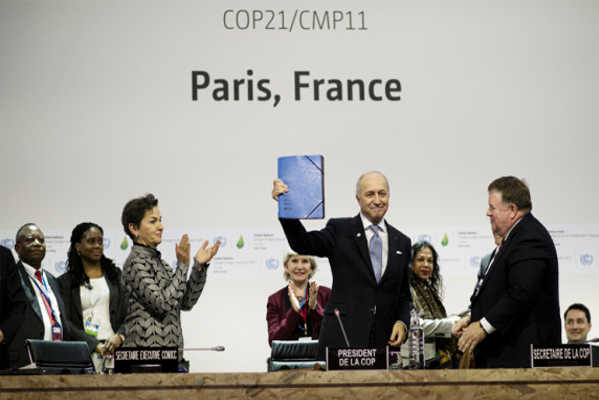Many performance indicators of global and national energy systems suggest that global temperatures could still be kept below 2°C. However, future trajectories will soon diverge from 2°C pathways if key existing technologies are not rapidly deployed and new technological advances made.
The Paris Agreement provides a foundation for future climate policy, but lacks many of the details required for implementation. A new paper published in Nature Climate Change today outlines a method to track progress towards the goals of the Paris Agreement and the country-level emission pledges.
After years of negotiations based on a top-down agreement, the bottom-up approach of the Paris Agreement was a huge step forward, but details are lacking on how to track progress and compare emission pledges.
“A significant challenge with a bottom-up agreement is that the resulting freedom countries have in how they report emission pledges makes comparability and tracking progress more difficult,” said Glen Peters, Senior Researcher at the Center for International Climate and Environmental Research — Oslo (CICERO) and lead author of the study.
The researchers developed a nested structure of key indicators that is easily mapped to both the wide array of different national emissions pledges and to global emission scenarios consistent with the Paris 2°C goal. This allows a method of tracking progress, both towards emission pledges and to the overarching objectives of the Paris Agreement.
The method was applied to the recent slowdown in global emissions, and reveals some good and bad news.
“Global emissions have unexpectedly levelled off in the last three years, and that opens an opportunity to lock in the gains and put emissions on the needed downwards trajectory,” said Robbie Andrew, a Senior Researcher at CICERO.
“Much of the reductions in global emissions have been from a rapid deceleration, and even decline, in coal consumption in China” said Jan Ivar Korsbakken, a Senior Researcher at CICERO. “The dramatic changes in Chinese coal consumption are driven primarily by economic factors — a decline in output of cement, steel, and other energy intensive products.
“Chinese energy and climate policies do play a role, but still a lesser role than market forces,” added Korsbakken.
“Coal use in the United States plunged by one quarter in the last two years and by almost half over the last decade,” said Robert Jackson, a professor of Earth Sciences at Stanford University. “Natural gas and renewables are taking its place, and there is little the former Obama administration or the current Trump administration can do to stop it.”
Many of the key indicators show positive progress in several areas, both globally and in key countries.
“The rapid deployment of wind and solar is starting to have an effect globally, and in key players such as China, the US, and the EU,” said Peters. “The challenge is to substantially accelerate the new additions of wind and solar, and find solutions for effectively integrating these into existing electricity networks.”
Scenarios of future emission pathways consistent with the Paris Agreement suggest that wind and solar alone are not sufficient to meet the goals of the Paris Agreement.
“The greatest challenge is the slower-than-expected rollout of technologies to capture and permanently store carbon from fossil fuel and bioenergy combustion” said Andrew. “Most scenarios suggest the need for thousands of facilities with Carbon Capture and Storage by 2030, and this compares with the tens currently proposed.”
“If we don’t meet the high-levels of Carbon Capture and Storage as indicated in the scenarios that achieve the 2°C target at lowest cost, then we need to burn less fossil fuels in the near term,” said Korsbakken. “We currently don’t see sufficient progress on either Carbon Capture and Storage, or on reductions in fossil fuel consumption.”
“We are already at a stage where we have effectively emitted too much carbon dioxide, and the only feasible pathway to keep temperatures below 2°C is to physically remove carbon from the atmosphere,” said Peters.
“The rapid and continued deployment of wind and solar is welcome, but the real challenge required is to develop technologies and behaviours that shift the entire global energy system to be carbon neutral by mid-century.”
Reference(s):
Publication: Glen P. Peters, Robbie M. Andrew, Josep G. Canadell, Sabine Fuss, Robert B. Jackson, Jan Ivar Korsbakken, Corinne Le Quéré, Nebojsa Nakicenovic. Key indicators to track current progress and future ambition of the Paris Agreement. Nature Climate Change, 2017
Research story: Centre for International Climate and Environmental Research (CICERO) | January 30, 2017 (source)












Comments